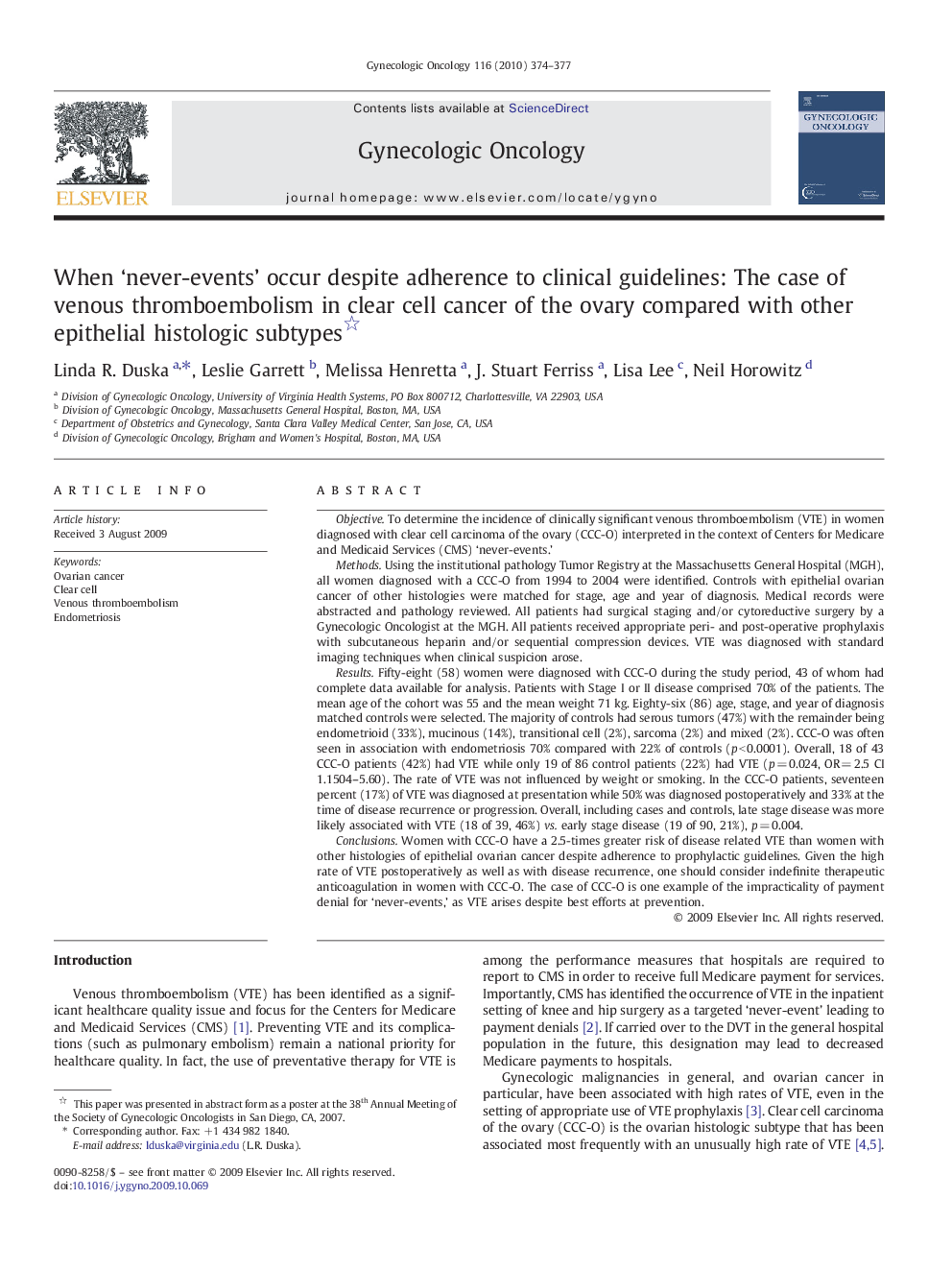| Article ID | Journal | Published Year | Pages | File Type |
|---|---|---|---|---|
| 3944165 | Gynecologic Oncology | 2010 | 4 Pages |
Objective.To determine the incidence of clinically significant venous thromboembolism (VTE) in women diagnosed with clear cell carcinoma of the ovary (CCC-O) interpreted in the context of Centers for Medicare and Medicaid Services (CMS) ‘never-events.’Methods.Using the institutional pathology Tumor Registry at the Massachusetts General Hospital (MGH), all women diagnosed with a CCC-O from 1994 to 2004 were identified. Controls with epithelial ovarian cancer of other histologies were matched for stage, age and year of diagnosis. Medical records were abstracted and pathology reviewed. All patients had surgical staging and/or cytoreductive surgery by a Gynecologic Oncologist at the MGH. All patients received appropriate peri- and post-operative prophylaxis with subcutaneous heparin and/or sequential compression devices. VTE was diagnosed with standard imaging techniques when clinical suspicion arose.Results.Fifty-eight (58) women were diagnosed with CCC-O during the study period, 43 of whom had complete data available for analysis. Patients with Stage I or II disease comprised 70% of the patients. The mean age of the cohort was 55 and the mean weight 71 kg. Eighty-six (86) age, stage, and year of diagnosis matched controls were selected. The majority of controls had serous tumors (47%) with the remainder being endometrioid (33%), mucinous (14%), transitional cell (2%), sarcoma (2%) and mixed (2%). CCC-O was often seen in association with endometriosis 70% compared with 22% of controls (p < 0.0001). Overall, 18 of 43 CCC-O patients (42%) had VTE while only 19 of 86 control patients (22%) had VTE (p = 0.024, OR = 2.5 CI 1.1504–5.60). The rate of VTE was not influenced by weight or smoking. In the CCC-O patients, seventeen percent (17%) of VTE was diagnosed at presentation while 50% was diagnosed postoperatively and 33% at the time of disease recurrence or progression. Overall, including cases and controls, late stage disease was more likely associated with VTE (18 of 39, 46%) vs. early stage disease (19 of 90, 21%), p = 0.004.Conclusions.Women with CCC-O have a 2.5-times greater risk of disease related VTE than women with other histologies of epithelial ovarian cancer despite adherence to prophylactic guidelines. Given the high rate of VTE postoperatively as well as with disease recurrence, one should consider indefinite therapeutic anticoagulation in women with CCC-O. The case of CCC-O is one example of the impracticality of payment denial for ‘never-events,’ as VTE arises despite best efforts at prevention.
